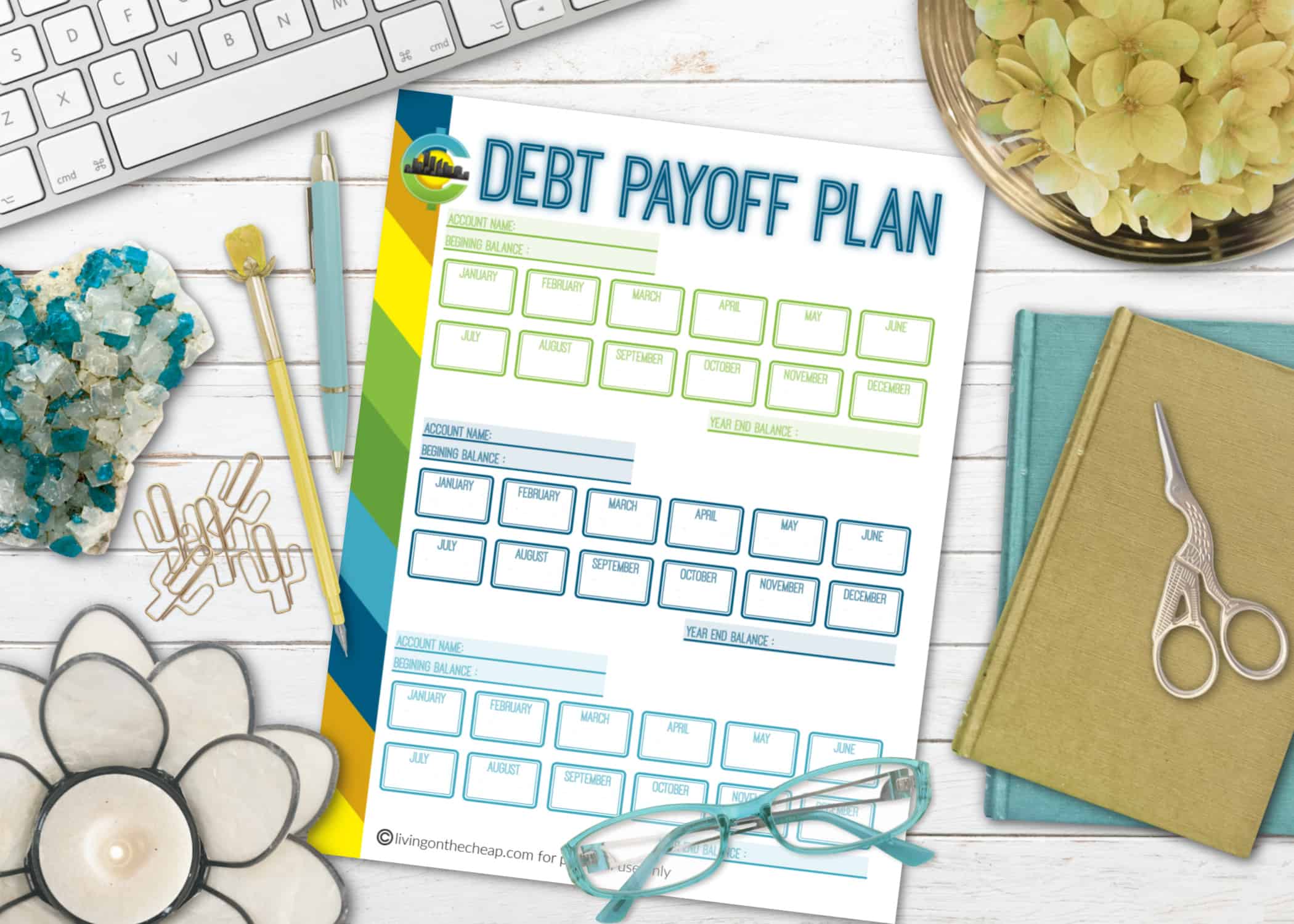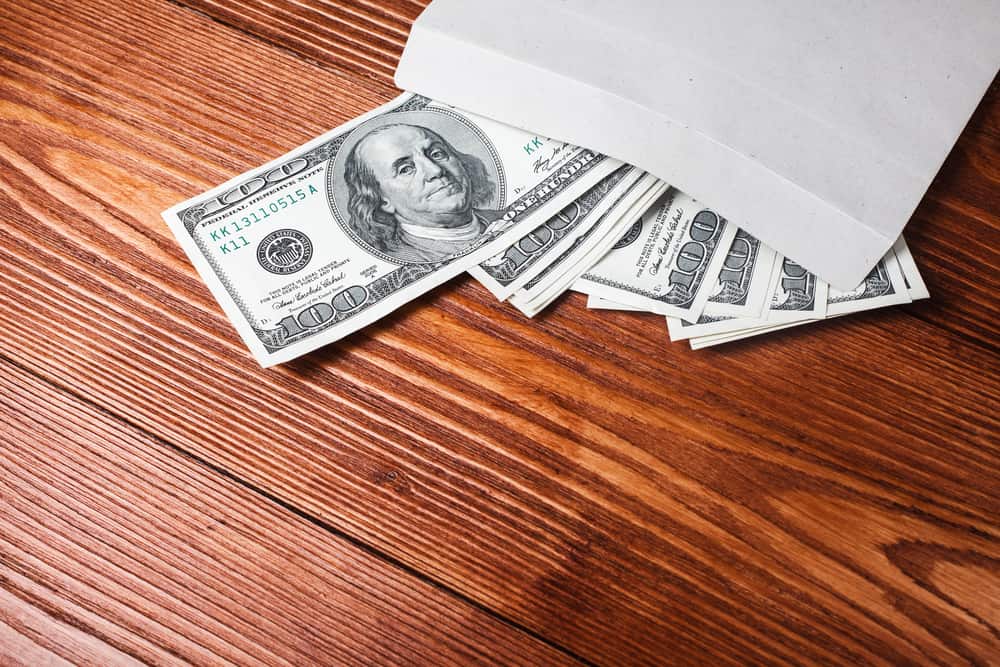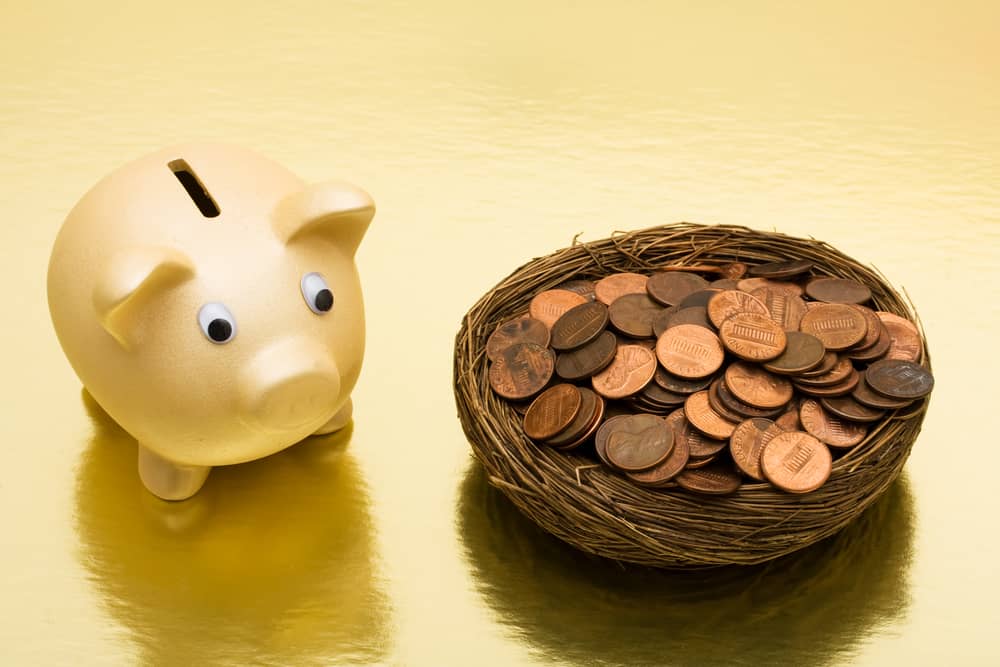Many people believe getting out of debt is all about math: spending less than you earn and paying the difference to your debt until it’s gone. Jackie Beck, author of The Debt Myth, says that it takes more than just math to get out of debt. It’s about changing your money habits and the way you view debt, plus putting in some good old-fashioned work. And Miranda Marquit, publisher of Planting Money Seeds, has a few words of hard-earned advice for anyone who has dug themselves into a debt hole so big they think they’ll never climb out.
Here are their expert tips on how to break the cycle and wipe out debt — this time for good.

Change the way you see debt
The use of debt as a tool is ingrained (and heavily pushed) in America, but if you want to become debt-free, the first step is to admit that it’s not a tool that works for you. Yes, you buy get things now and make monthly payments — but that only works when everything is perfect.
Since we don’t live in a perfect world, it’s time to start viewing debt as dangerous. It’s risky and expensive. (Even 0% interest debt — because what happens if you can’t make your payments? Or you miss that final payment deadline?) Commit to a new attitude of only buying things with money you already have, and you’ll have made the most critical change in wiping out debt.
Make wiping out debt a priority
“Don’t just say, ‘I’ve got to pay down this debt.’ You have to [make it] important in your life,” says Marquit. If you have a partner, you need to get him or her on board. You have to believe it will improve your life, she says. Motivation is everything.
Identify “wants” versus “needs”
Unexpected medical bills or a job loss can happen to anyone. But we’re talking about everyday spending habits. Do you need a smartphone and a $100-a-month data plan? Do you need a big-screen TV? Reconsider what is important. Would you enjoy eating out a few times a week rather than having a TV in every room?
For a couple of months, keep track of how much you spend on “wants.” Could you eliminate some of those things from your budget? Once you find where you are wasting money, you might stop spending on that STARZ deluxe package on cable and put that money toward your monthly debt.

Stare down your actual debt amount
You have to know how much you owe, says Beck. Start by identifying all of your debts. Find out the following information for each debt:
- The name of the creditor
- What kind of debt it is (such as credit card, car loan, student loan, mortgage, home equity line of credit, personal loan, etc.)
- How much you owe
- The interest rate
- Due date
- And your minimum monthly payment
Lay it all out there, and be brave. Add it all up when you’re done.
Organize and strategize
Now that you know what your debts are, it’s time to decide in which order you want to pay them. Financial guru Dave Ramsey suggests the “snowball” approach, paying off the smallest bill first to give yourself momentum.
Marquit likes the “debt avalanche” approach recommended by Luke Landes at Consumerism Commentary. This method says to take the credit card with the highest interest rate and pay it off first. (Keep making at least minimum payments on all your other cards.) You won’t see the results as quickly, but eventually you gain momentum. Say you’re paying off $200 a month on that first card. When that debt is gone, you have that $200 to put on the next card, on top of the minimum payment you were making. And so on.
Typically, pay-off methods are one of the following:
- Lowest balance to highest balance: Best for most people because of the quick wins and motivation factor
- Highest interest rate to lowest interest rate: Good if you are a very persistent person or have extremely high-interest debt
- Custom order designed by you: Good if there are specific debts that you really want to pay off ASAP.
- A combination of methods. Maybe you will use the debt avalanche approach until one credit card balance gets so low you want to pay it off first. Good for you! Any movement toward being debt-free is a good one.

Photo: Deposit Photos
Don’t get too hung up on which method is the perfect one for you. Pick one. Whichever approach you take, commit to it. Once your credit card is paid off, put it away, or only charge things that you can pay off at the end of the month to avoid interest. If you can’t, consider finding a part time job to pay off the debt.
Start knocking out those debts
If you decide to use the debt snowball method, your focus is the smallest debt on your list (don’t focus on the interest rate). Create a new budget so you can continue to make the minimum payments on all your debts except for the first and smallest debt on your list. Send the minimum payment to that debt, plus as much extra as you possibly can each month until it’s gone. That’s when the magic starts.
Once the first debt on your list is repaid, you will apply that amount of money to the second debt (plus the minimum amount you are already paying). Now you are paying off the second debt more quickly, and seeing clear progress. Continue the process as you pay off each debt, with the size of your payment growing like a snowball rolling downhill each time. And one day, you are debt-free.
Learn new money habits
While you are paying those debts off, you are learning new money habits. You must get into the habit of buying things only with real money instead of credit cards. Using a credit card is putting yourself into more debt. Budget a certain amount of cash for your entertainment and food, and when the money is gone you do without or find free ways to compensate. Work at getting in the kind of financial shape that will allow you to avoid borrowing.
Build up at least a small emergency fund
That unexpected bill happens, so make it an expected one. Your budget should include a payment to an emergency fund. Pretend it is an insurance payment, knowing that without it you could be putting yourself in more debt. Shoot for an emergency fund that equals 6 months of your expenses.
Not possible right now? Start with whatever you can scrape together and go from there. Start by putting loose coins in a jar every night, or round up purchases in your checkbook to start a secret savings account. Use coupons when you go grocery shopping, then put the savings amount in your emergency fund.

Photo: Deposit Photos
Love the budget
Make sure you’ve got a plan in place for how you want to spend your money. This is your monthly budget. Always track your spending so you can see where your money is really going. This will help you stay on track with your budget and find extra money to put toward debt. Reducing your expenses (at least temporarily) and increasing income can help, too.
Give every penny a job
Once you are out of debt, make sure your money doesn’t get bored. Create a zero-sum budget. At the beginning of each month, every dollar that comes in needs to be dedicated to expenses or savings. Your income minus your expenses and savings should equal zero. Instead of getting back into the spending habit, send that extra money to an investment fund or any other form of savings, so you can continue on the path to wealth.
If you liked this post, you may also like:


Making an amortization schedule is extremely helpful. It’s easy to do with a spreadsheet program. You can see how making extra payments or amounts starts wiping off payments at the end, and also the total amount paid out.
We paid off our first home in 5 years before we were 30, a second home in 2 years before we were 40 and now our third home will be paid off next year in 3 years before 45. Both homes after our first were due to moves. Each time we pay off a home, we are debt free again, which is so nice.
The “envelope” system of budgeting is extremely helpful. We do it in the computer, not in actual envelopes. But if the money is not in an account, you cannot get it…or you have to borrow from a different account.
Annualizing all your expenses is extremely helpful also. This means even a once-a-year bill like property taxes. We annualize each category (and sub-category) then divide it by the number of paychecks. That’s the amount that goes into each account every paycheck. That means $80 per paycheck for a vacation, or $2 per week for the newspaper (paid annually), etc. That in itself is another type of “emergency fund” because if you have, say $1000 in property taxes mid-year and you need that money for something else, you can use it, then build that $1000 back up before the taxes are due.
Julie, that’s awesome how quickly you’ve paid off each of your houses :)
Well, it’s a nice goal, but I’m not sure it’s feasible for us. I’m the sole wage earner. I made a fair wage, but we’re not able to make double payments on the house or anything like that. Plus, we need to funnel some of our money into IRAs because disability made me miss out on my 20s and the first couple years of my 30s.
We just got a mattress for 0% down for five years. We only did this because I may get a bonus again this year. If so, part of it will go to paying that down. If not, we can go ahead and make large payments or even just take the amount out of savings.
As for the mortgage, like Julie, I’m a big fan of spreadsheets. I put our mortgage into one and calculated various outcomes. If we increase our monthly payments by $100 a month each year, we can have the place paid off after having lived here for under 13 years. If we can start paying more, great. Otherwise, at least we’re inching our way toward debt freedom.
But we have $20,000-30,000 of bills on the horizon as Tim needs dental implants for his entire mouth. We have less than three years before it becomes urgent, plus things like double pane windows so we can stop paying $400/month in the summer for cooling. I don’t think we’ll be able to avoid going into debt entirely, but hopefully we can get into debt that we can quickly and reasonably pay off. Which is the next best thing for us.